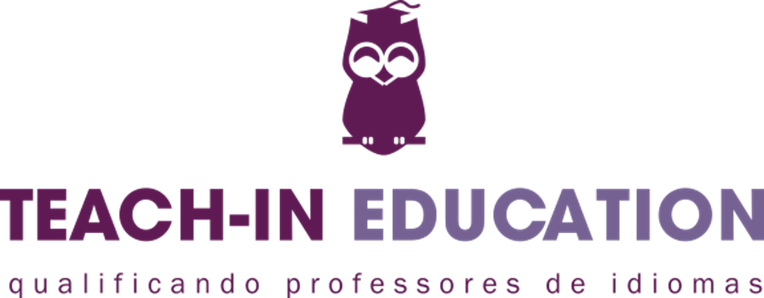What does Project-based Learning (PBL) Look Like Inside a Language Classroom
Louise Emma Potter is a teacher trainer, material writer, language coordinator at a regular school, presenter and partner at Teach-in Education. Her main goal is to develop the professional growth of language teachers in private and public schools through workshops and training sessions. She is the author of many series of English books for young learners published by Somos Educação, FTD, Disal and Pearson. Her main interest is working with anything related to Education. PBL is at the top of the list at the moment. Email: louise@teach-in.com.br


What does PBL look like inside a language classroom
Embracing PBL in the language classroom in a private school in Jundiaí, a small city 70 km outside of São Paulo, Brazil, was and still is a great challenge. Not that I can say that we are applying the approach to its fullest potential yet, however, one has to start somewhere. After having a communicative approach which is common to all regular schools in our country; 1- hour length classes, twice a week, course book etc. and not having reached a satisfactory outcome, we decided to take a different route.
Working with PBL in a foreign language is not the same as applying it in the mother tongue. Moments of language input, drills, practice, just like in any other language class are indeed extremely necessary. One must understand that we are not referring to the context of a bilingual school here as it is not the case of the school where I am the language coordinator, nevertheless, our aim is to always work cross curricular, having other teachers involved in the projects. In our view, language teaching should not be taught without taking other subjects into consideration. Geography, History, Maths and Science are all relevant to language acquisition. Not only the subjects themselves, but understanding that languages and their cultures also carry a relevant relationship to the acquisition of linguistic competency. Culture is an essential starting point for any approach for teaching a second language. I fully agree with a statement below written by Elmes.
With first language learners immersed in their own culture, connections between language and culture often never come to question. For foreign language learners, where true cultural intricacies and understandings are situated well beyond the textbook, an understanding of language assumes a very different form. While it is possible to separate language and culture, one has to question the validity and implications such separation brings (ELMES: The Relationship between Language and Culture)
After much thought, we decided that PBL was one of the ways we could accomplish our goals providing not only the students, but also the teachers with opportunities to engage in real world communication in the classroom. When applying PBL, we believe the teachers are involved just as much as the students in the learning process.
Remembering that the projects are the main dish and not the dessert (an expression coined by Larmer and Mergendoller -2010), PBL is much more complex and embracing then simple end of unit projects; as the project is the unit and the contents are taught through the project. Kicking off with an engaging Driving Question, which is the main core of any PBL approach, students are then encouraged to set off into their own inquiry, based on their curiosity and own drive towards the topic. A recurring question we get is if students are using the target language throughout the class, during all discussions. The answer is no. During their inquiry, they tend to fall back into their native tongue as it is the language they can best communicate and exchange ideas in. As they become more proficient, the discussion tends to move towards the target language, nevertheless, we do not make the use of the target language compulsory during the classes. The final product presented by the students to the community will definitely be in the target language.
Our main objective when embracing PBL in the language classroom is to motivate and engage students during this specific class, boosting their curiosity by working on real world issues and at the same time working on the 21st century skills and the language itself. During our teacher training moments, we analyzed and worked through Bloom`s taxonomy so teachers were aware of what kind of questions they were asking in the classroom and what thinking skills they were activating in their students mind; we examined different social skills we wanted to enhance during the projects, picked out interesting topics from the course books, we evaluated language that had to be reinforced or presented, we considered cross curricular subjects that could be involved and many other elements which are crucial not only for language classes but also extremely important to get students involved in their learning process.
Below is an example of a project that was carried out by students in the school. This project was not actually about solving world issues; however, students were given choice and opportunities to manage, construct, and drive their own learning while working on Fairy tales.
The kick off was presenting the following driving question to the students: What if fairy tales we know were written today? In the table below, we have presented the project elements that were to be explored throughout the project.
|
NAME OF PROJECT |
|
|
21st CENTURY SKILLLS |
|
|
COURSE BOOK TOPIC |
|
|
DRIVING QUESTION |
|
|
PURPOSE (Bloom’s taxonomy verbs) |
|
|
NUMBER OF CLASSES |
|
|
RESOURCES THROUGHOUT THE PROJECT |
|
|
USE OF LANGUAGE |
|
|
|
|
CROSS-CURRICULAR |
|
|
REFLECTION |
|
|
PRODUCT |
|
|
AUDIENCE |
|
Table 1 - Extracted from: Tavares, J. Potter, L. 2018. Project-based learning applied to the Language Classroom. Teach-in Education. São Paulo.
The main purpose of the project above was for students to read a famous fairy tale and recreate it with elements of the modern world. Elements such as castles, princes, horses, monsters would no longer be part of the story. They would have to come up with modern aspects and recreate the story, maintaining the same plot and structure. Students would have to at first, pick out a fairy tale of their choice and analyse the language, vocabulary and expressions used in them; they would then have to reflect upon the reason people write and read fairy tales, the impact fairy tales have on children, evaluate the outcome of the chosen fairy tale to then finally recreate their own. During this process, students would be reading, analysing vocabulary and structure, comparing, collaborating and creating. The teacher`s main role during the process would be to give the language input when necessary, monitor their steps to make sure they are on track and on time and encourage them throughout the process. The teacher`s goal was to keep them focused and present them with daily plans to organise and assess their work. Daily assessments using rubrics and constant self-reflection are crucial when working with PBL.
At first, it can be quite messy and chaotic, as the students take over and are in charge of their learning process and are engaged as productive learners and workers.
As in all PBL classes, students should then present their project to an audience, and what better audience could they have than the primary classes in their own school. Having younger learners observe with shining eyes as the older ones are presenting their work is very gratifying. Students read their recreated fairy tales to the young ones, who are astonished as they recognise the different elements in the story as they while listening.
In the e-book, Project-based learning applied to the Language Classroom, you can find example of projects from grades 1 to 9. Hope you find this article encouraging to dive deeper into PBL.
Links
Project-based learning applied to the Language Classroom. https://www.amazon.com/Project-Learning-applied-Language-Classroom-ebook/dp/B07BBRJ4XF
www.teach-in.com.br
References
Elmes, D. (2013). The relationship between language and culture. National Institute of Fitness and Sports in Kanoya International Exchange and Language Education Center, available at: www2. libnifsk. ac. jp/HPBU/annals/an46/46-11. Pdf.
Larmer, J. 2015. Gold Standard PBL: Sustained Inquiry. Buck Institute for Education Website. Available at: <https://www.bie.org/blog/sustained_inquiry_in_pbl>. Accessed Dec. 27, 2018.
Tavares, J. Potter, L. 2018. Project-based learning applied to the Language Classroom. Teach-in Education. São Paulo.
Please check the Methodology and Language for Primary course at Pilgrims website.
Please check the Methodology and Language for Secondary course at Pilgrims website.
Please check the 21st Century Thinking Skills course at Pilgrims website.
What does Project-based Learning (PBL) Look Like Inside a Language Classroom
Louise Emma Potter, BrazilCreative Writing for Creative Reading
Alan Pulverness, UKStory Prompts for Reluctant Writers
Walton Burns, USA